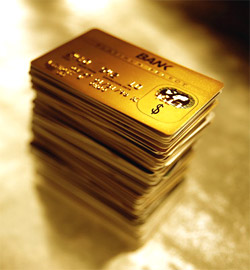
What Did Bernard Madoff Do?
 On June 29, 2009, Bernard L. Madoff was sentenced to 150 years in prison. Let’s take a moment to understand how his scheme worked. The end result, of course, is that Madoff created up to an estimated $50 billion of losses for investors — said to be the biggest fraud committed in the history of Wall Street.
On June 29, 2009, Bernard L. Madoff was sentenced to 150 years in prison. Let’s take a moment to understand how his scheme worked. The end result, of course, is that Madoff created up to an estimated $50 billion of losses for investors — said to be the biggest fraud committed in the history of Wall Street.
Too Good to Be True
Madoff’s firm offered what most investors seek — low risk and high returns. This should have fallen under the “too good to be true” category, as these concepts are fundamentally at odds. Investors should have seen red flags when they saw that no other investment firms were able to match or even come close to the performance of Madoff’s investments. In general, investors accept tradeoffs along a scale of returns, with progressively higher returns generating correspondingly higher risk. In both up and down years, however, investments made by Madoff’s firm returned its clients between 12 and 13 percent like clockwork — an unusually steady rate.
That unusual record created some doubt and concern among Wall Street advisors, hedge funds, and other potential investors, as well as competitors, most of whom could make very little sense of the complex, ambiguous statements the firm routinely sent investors. But it also managed to attract a large and devoted group of investors looking for steady — and, unfortunately for them, only apparently secure — returns.
An Amazing Ponzi Scheme
Recent events revealed Madoff’s financial strategy as little more than a pyramid scheme, or a “Ponzi Scheme,” as it has become known. The structure is named after Charles Ponzi, who created the first such scheme in the 1920’s by selling investments that were said to generate healthy returns but were actually paid out from the funds brought in by new investors.
Ponzi schemes generate an unsustainable cycle of acquisitions and redemptions. The balance sheet graphics below help illustrate what a Ponzi scheme looks like. Balance sheets depict what a company owns and what it owes. Let’s first look at a normal balance sheet, and then one of a Ponzi scheme.
Normal Balance Sheet
In the case of an investment firm, for example, the “own” part of the balance sheet includes the investments the company makes and any cash it has on hand. The client deposits are the “owe” part of the balance sheet (the company owes its clients the deposits). In a non-fraudulent company, the investments (own) would grow, and the “worth” would grow.
Ponzi Scheme Balance Sheet
But, a Ponzi scheme balance sheet ends up looking like this:
In this example, the categories have the same meaning, but the cash and investments (own) are not growing as fast (or at all) as the Ponzi scheme purports. Cash is depleted to pay for the promised returns to clients. In order to keep going, the Ponzi scheme must attract new client deposits to artificially prop up the investments section of the balance sheet so that the new cash can be used to pay the returns from the investments to earlier investors. In reality, however, the own section of the balance sheet is going down, and therefore the worth is also going down, eventually slipping into negative territory. The result is a constant need for cash, which puts pressure on the firm to attract greater and greater investments at an increasingly rapid rate to pay out those investors seeking redemptions.
It’s not difficult to see that Ponzi schemes eventually run into trouble. The cycle stops and the scheme collapses when redemptions exceed assets, which turned out to be Madoff’s downfall: the recent economic downturn generated more redemptions than his firm could afford to pay out, which led to his confession to his sons on the evening of December 10. What is remarkable about Madoff’s firm is how it stayed in business for decades, while Ponzi’s original scheme, for instance, was discovered within a year.

